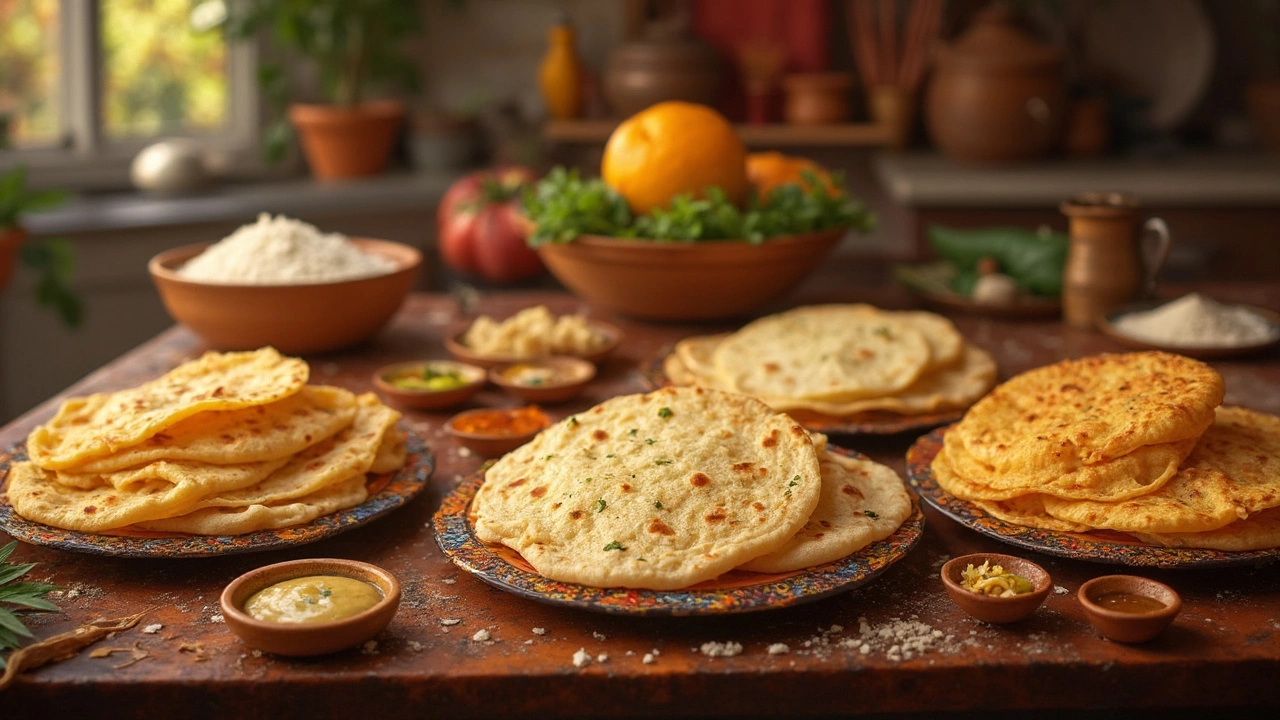Carbs in Roti – Understanding the Energy Content of Indian Flatbread
When exploring carbs in roti, the amount of carbohydrates present in a typical Indian flatbread made from whole wheat flour, also known as roti carbs, it helps to start with the basics: a plain 40‑gram roti usually carries about 25 grams of carbs, give or take depending on size and flour quality. Roti nutrition, the broader profile of calories, protein, fiber and micronutrients found in the bread shapes how those carbs affect blood sugar. The type of flour – whole wheat versus refined – is a key related entity; whole wheat brings more fiber, which slows carb absorption and lowers the glycemic index. Another linked entity is glycemic index of roti, a measure of how quickly carbs raise blood glucose levels. A higher GI means faster spikes, while a lower GI keeps energy steadier. Understanding these connections lets you decide whether a roti fits your daily carb budget and how it pairs with protein‑rich dishes like dal or paneer.
Why Roti’s Carb Count Matters for Your Diet
Carb counting isn’t just for diabetics; anyone watching weight or stamina benefits from knowing carbs in roti. For example, adding a teaspoon of oil to the dough — a trick highlighted in many home‑cook guides — introduces healthy fats that don’t add carbs but can reduce the net carb impact by slowing digestion. Similarly, a pinch of baking powder or baking soda, as discussed in roti‑softening articles, changes the crumb structure, making the bread fluffier and slightly less dense, which can subtly lower the carbohydrate load per bite. These tweaks tie back to the triple: Roti nutrition requires proper dough handling; proper dough handling influences carb absorption; carb absorption determines energy release. When you pair a roti with high‑protein dishes like lentil dal (which, by the way, leans more toward protein than carbs) or paneer, the overall meal’s glycemic response drops, keeping you fuller longer.
Beyond the kitchen, cultural habits shape how often roti appears on plates across Indian regions. In the north, multiple rotis accompany a single meal, while in the south, rice often replaces them. Knowing the carb differences helps you balance traditional meals with modern health goals. Whether you’re a beginner learning to roll a perfect puff or an experienced cook experimenting with multi‑grain blends, the carb story stays the same: size, flour choice, and added ingredients dictate the energy you get. Below you’ll find a curated set of articles that dive deeper into roti puffing, dough tricks, and the science behind carb content, giving you actionable tips to tailor each bite to your nutritional needs.

Roti's Role in a Balanced Diet: Calories, Carbs, and Choices
Roti is a popular staple in many diets, but how many carbs does it really contain? This article delves into the nutritional makeup of roti, including its calorie content and how it fits into a balanced diet. Whether you're curious about plain roti with vegetables or roti slathered in ghee, this guide breaks down the numbers and offers tips for a health-conscious lifestyle.